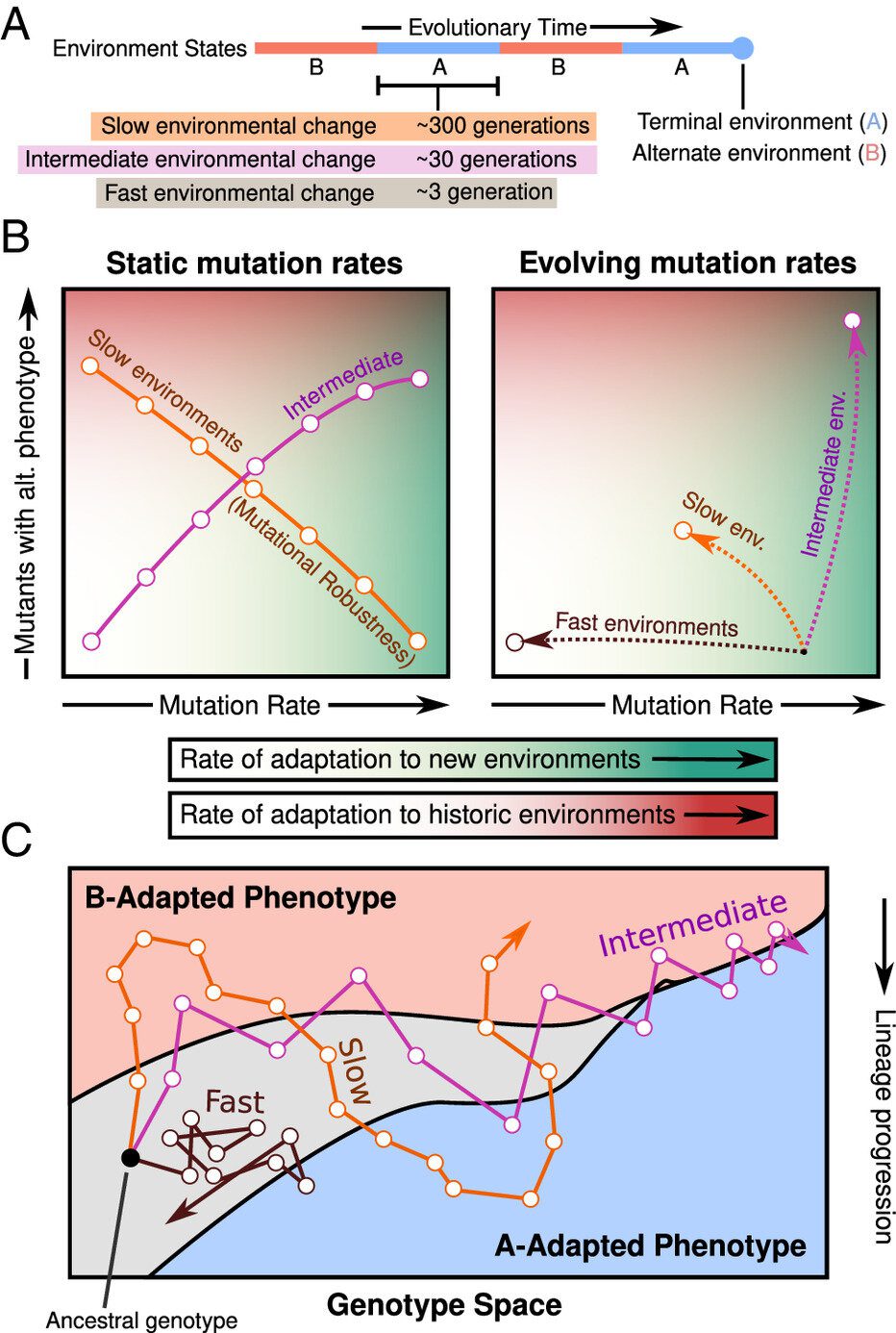

The study of evolution investigates how living organisms adapt over generations, but what about the evolution of the evolutionary process itself?
Scientists have pondered for years why biological entities are so adept at adapting to their surroundings—a quality referred to as “evolvability.” Consider, for instance, the rapid emergence of antimicrobial resistance and the swift mutations of viral pathogens that allow them to bypass vaccines.
Recent research from the University of Michigan suggests that possibly, the effectiveness of evolution stems from the fact that evolution can evolve as well. This study is published in the Proceedings of the National Academy of Sciences.
“Life excels at problem-solving. The diversity of organisms we observe, all stemming from a common ancestor, is astonishing,” noted Luis Zaman, an evolutionary biologist at U-M and the lead author of the study. “What makes evolution so creative? Perhaps that very ability has evolved over time.”
The question of whether evolvability can itself evolve intrigues Zaman, particularly since evolution thrives on mutations that enhance an organism’s fitness in its current environment. However, evolvability focuses not on immediate fitness but on amplifying the potential for future adaptation.
“This forward-looking aspect of evolvability raises debates,” Zaman explained. “It’s an important phenomenon, and we are aware that it occurs. However, understanding why and when it happens remains elusive. Our objective was to assess whether we could observe the evolution of evolvability in a realistic computational model.”
Transforming Specialists into Generalists
To investigate these concepts, Zaman and his colleagues developed a computational model consisting of three advantageous logic functions and three harmful logic functions. These functions can be visualized as red and blue berries that differ in their benefits and hazards in various environments, according to the researchers.
In one modeled environment, red berries benefit the population, while blue berries pose a threat. Conversely, in another setting, blue berries are advantageous while red berries are toxic. This dynamic means that a population cannot thrive in both environments simultaneously; it can only excel in one at a time, as Zaman pointed out.
The team executed a range of scenarios to investigate how evolvability might fluctuate over time. In one instance, the environments remained static: the population consistently consumed either red or blue berries. In another scenario, the population alternated between consuming red and blue berries.
The results revealed that when the environments “cycled,” the populations learned to be agile, successfully transitioning between the two contrasting environments. Notably, this cyclical approach resulted in a thousandfold increase in mutations, enabling the organisms to adapt to the consumption of both red and blue berries.
Adjusting to a Mutational Landscape
The computational framework employed by the researchers, known as Avida, was used to analyze evolvability. When scenarios with cycling logic functions (represented by red and blue berries) were created, the programs pushed themselves into new mutational landscapes.
Envision the evolved computer programs as pathways formed by multiple genes represented as computer code, Zaman explained. Each environmental shift necessitates a reconfiguration of these pathways to adapt to the new berries.
“The mutational landscape that populations navigate through evolution comprises areas where single mutations can reshape this genetic pathway,” he stated.
Mutations occur when one of the computer instructions (genes) within the program (genetic pathway) is altered. Eventually, this reconfiguration allows the population of computer programs to thrive in environments adjacent to specialists in red berries and blue berries.
The researchers also manipulated the frequency of cycles between environments: they compared populations that spent one generation in a setting versus those that remained for 10 and 100 generations. Interestingly, they observed that if the environment changed too rapidly, evolvability did not increase. Nevertheless, even extended cycling periods—spanning hundreds of generations—could foster and sustain evolvability.
“Once a population attains this level of evolvability, it appears to persist despite future evolutionary changes,” Zaman highlighted.
This suggests that when evolution enhances its own capacity to evolve, this trait may become a permanent fixture.
Further Reading:
Bhaskar Kumawat et al, “Evolution takes multiple paths to evolvability when facing environmental change,” Proceedings of the National Academy of Sciences (2024). DOI: 10.1073/pnas.2413930121
Information provided by
University of Michigan
Citation:
The evolution of evolution itself: How evolution got so good at evolving (2025, February 13) retrieved 14 February 2025 from https://phys.org/news/2025-02-evolution-good-evolving.html
This document is subject to copyright. Except for fair dealing for personal study or research, no part may be reproduced without written permission. The content is provided solely for informational purposes.









